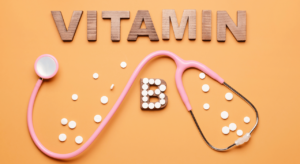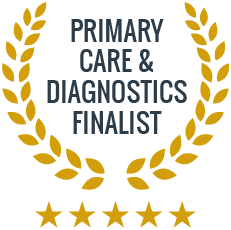We don’t tend to spend much time thinking about our bones until we suffer a fracture or it’s too late to make a meaningful lifestyle change, so we are here to invite you to give your bones a thought early on.
Having strong bones will help prevent osteoporosis, fractures, scoliosis and many other physical and movement complications in the future. The state of our bones is going to make a big difference in how we age and how much we can enjoy our later years.
One of the key factors in maintaining bone health is ensuring an adequate intake of calcium and Vitamin D. This guide will explore calcium-rich foods, the impact of osteoporosis, and the importance of Vitamin D in promoting bone health.
So what is Osteoporosis?
Osteoporosis is a condition characterised by weak and brittle bones, which increases the risk of fractures. It often develops silently over many years, making it essential to be proactive about bone health. Factors contributing to osteoporosis include:
- Age: Bone density naturally decreases as we age
- Gender: Women are at a higher risk, especially postmenopausal women, due to decreased oestrogen levels
- Genetics: Family history can play a significant role in bone health
- Lifestyle choices: A sedentary lifestyle, diet, lack of sunlight exposure, smoking, and excessive alcohol consumption can all contribute to decreased bone density
Preventing osteoporosis involves maintaining bone density through a balanced diet, regular exercise, and lifestyle adjustments, making sure you’re getting enough sunlight, or where that isn’t possible, taking the right supplements.
The Role of Calcium in Bone Health
There are a lot of myths about calcium intake, such as the fact that we don’t need to worry about calcium intake after childhood. This is incorrect!
Calcium is the most abundant mineral in the human body, with about 99% of it found in bones and teeth. The primary functions of calcium include:
- Bone formation & maintenance: Calcium is crucial for developing and maintaining bone structure
- Muscle function: It helps muscles contract and relax properly
- Nerve transmission: Calcium plays a role in transmitting signals between nerves and muscles
- Blood clotting: It is essential for the coagulation process.
To maintain strong bones, adults need approximately 1,000 mg of calcium daily, increasing to 1,200 mg for women over 50 and men over 70.
Foods Rich In Calcium
Incorporating calcium rich foods into your diet is an excellent way to support bone health. Here are some of the best sources of calcium:
1. Dairy Products: Milk, yoghurt, and cheese are some of the best sources of calcium. A cup of milk typically contains about 300 mg of calcium.
2. Leafy Greens: Vegetables like kale, broccoli, and bok choy are excellent plant-based sources of calcium. For instance, one cup of cooked kale provides approximately 180 mg of calcium.
3. Fortified Foods: Many products, including orange juice, plant-based milk (such as almond or soy milk), and cereals, are fortified with calcium. Always check the labels for calcium content.
4. Fish: Canned fish with bones, such as sardines and salmon, are great sources of calcium. A 3-ounce serving of canned salmon with bones can provide around 180 mg of calcium.
5. Nuts and Seeds: Almonds, sesame, and chia seeds are rich in calcium. Just a quarter cup of almonds contains about 100 mg of calcium.
6. Legumes: Beans and lentils are not only a great source of protein but also provide calcium. A cup of cooked white beans can have about 160 mg of calcium.
7. Tofu: Calcium-set tofu is a fantastic source of calcium. Depending on the brand, a half-cup can provide between 200 and 400 mg of calcium.
8. Whole Grains: Some whole grains, such as quinoa and fortified breads, can contribute to your calcium intake as well.
The Importance of Vitamin D
We can’t talk about bone health without also talking about Vitamin D, which helps the body absorb the calcium from our foods.
Vitamin D plays a crucial role in calcium absorption and bone health. Without sufficient vitamin D, the body cannot absorb calcium effectively, which can lead to decreased bone density and increased risk of fractures.
Sources of vitamin D include:
- Sunlight: The body produces vitamin D when exposed to sunlight. Spending about 15-30 minutes in the sun several times a week can help, especially with exposed forearms, calves and face.
- Fatty Fish: Salmon, mackerel, and sardines are rich in vitamin D. A 3-ounce serving of cooked salmon can provide about 570 IU of vitamin D
However, for most people who live in colder climates, supplements are the key to maintaining a healthy vitamin D. Vitamin D deficiency is usually very prevalent in cold climates and the global majority. This is because the more melanin in the skin, the less vitamin D is from sunlight, meaning vitamin D deficiency can be common even in sunny climates.
Lifestyle Changes for Better Bone Health
In addition to consuming calcium and vitamin D, several lifestyle changes can help promote better bone health:
1. Resistance Training: Weight-bearing exercises such as walking, jogging, dancing, and resistance training such as circuits and strength training can help build and maintain bone density. The more your muscle tendons tug at your bones at the point they insert, the more you encourage the bone to grow in density!
2. Avoid Smoking: Smoking is linked to decreased bone density. Quitting can significantly reduce the risk of osteoporosis (as well as a whole host of other health issues).
3. Limit Alcohol Intake: Excessive alcohol consumption can interfere with calcium absorption. Stick to the maximum of 14 units a week, make sure you have alcohol-free days and avoid binge drinking.
4. Maintain a Healthy Weight: Being underweight can increase the risk of osteoporosis while being overweight can put excess strain on your bones and joints. Aim for a balanced diet and healthy weight through proper nutrition and exercise.
5. Monitor Caffeine Intake: High caffeine consumption may interfere with calcium absorption. While moderate coffee or tea consumption is generally fine, limit caffeine to 2-3 cups a day.
6. Stay Hydrated: Proper hydration supports overall and bone health. Drinking enough water helps maintain circulation and nutrient delivery throughout the body.
7. Get Regular Check-Ups: Regular health screenings, including bone density tests known as a “DEXA scan”, can help identify early signs of osteoporosis. Such assessments can inform you and your doctor about your bone health and help you develop a strategy to maintain it. You can also routinely test your calcium and vitamin D levels in our helpful blood profiles.
We hope this guide has been helpful. Remember – just because you can’t see or feel it (yet) doesn’t mean you shouldn’t pay attention. Bone health will make or break (sorry) how you experience your later years.

















